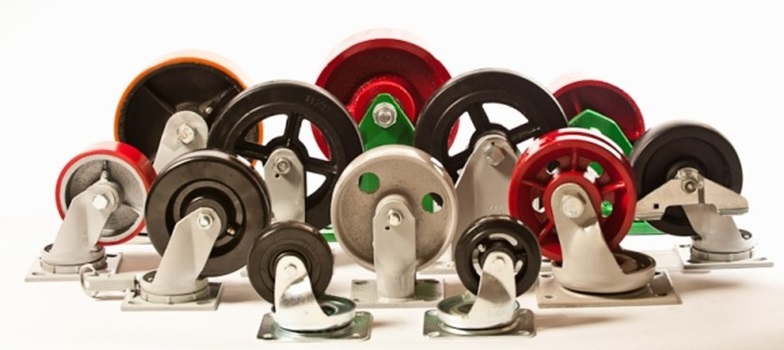Casters & Wheels

Types and Sizes of Casters
How do I know what caster to choose? Just Call Us for Help.
In order to select the caster that best fits your needs, you should consider the following:
- Load Weight The total weight of the load divided by the number of casters supporting the load = Weight per Caster
- Rolling Environment Is the surface smooth or rough? Are there cracks or tracks to cross over? Are there floor coverings that need to be protected?Is it important that the wheel is quiet?
- Operating Environment Will the caster be exposed to chemicals, petroleum, acids, water, moisture, high or low temperature? Does it need to be approved by NSF? Common wheel materials include various rubbers, polyurethane, polyolefin, steel, iron, and phenolics.
- Ease of Operation Larger diameter wheels roll easier than small diameter. Ball bearings roll easier than roller bearings, but roller bearings carry heavier loads. Delrin bearings are an alternative for NSF approved casters. What is the width of wheel?
- Swivel/Rigid Do you want the caster to swivel or do you want it to remain fixed?
- Free/Brake/Total Lock Do you need a wheel brake, “brake and steer” or “total lock”? Do you need thread guards?
- How does it mount? Does the caster mount with a plate, a grip-ring stem, threaded stem, or grip-neck stem? What are the dimensions of the plate or Stem (length and diameter)? For plates, what are the dimensions of the bolt holes?
